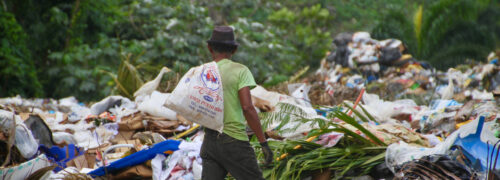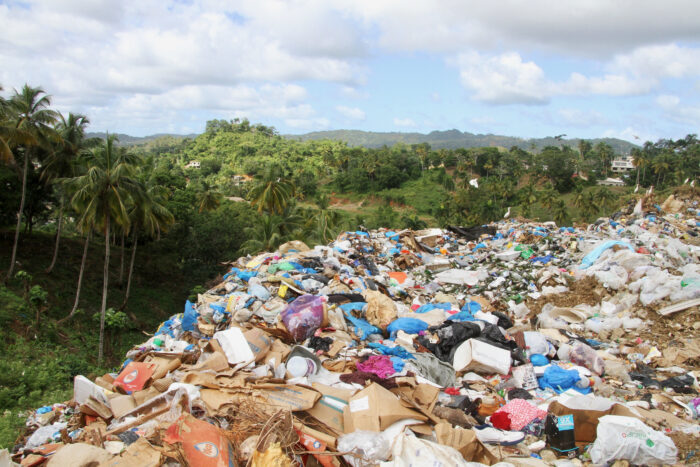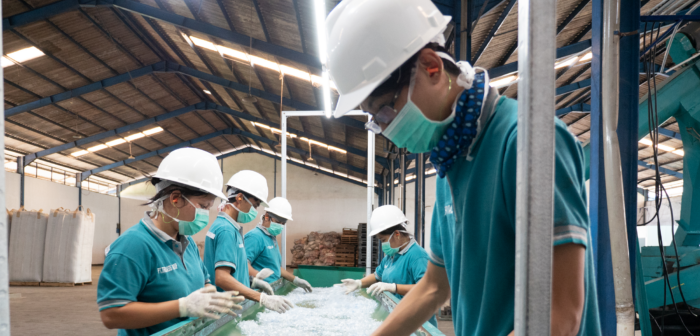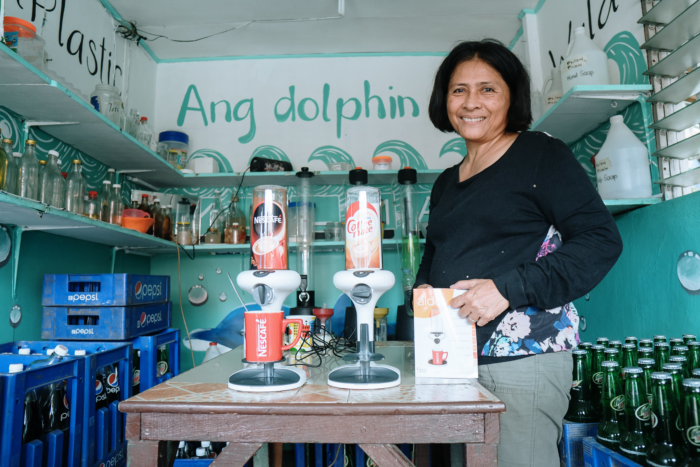How USAID is Working with the Private Sector to Combat Ocean Plastics Pollution

Combating ocean plastic pollution is a massive challenge on a global scale. With an estimated 8 million tons of discarded plastic flowing into the ocean every year, by some estimates there will be more plastic than fish by weight in the ocean by 2050.
Through USAID’s Journey to Self-Reliance, we focus our efforts on identifying locally-led solutions to help countries solve their own development challenges. Recognizing that most plastic waste comes from rapidly urbanizing cities in developing countries that lack the infrastructure, resources, and capacity to effectively manage their waste, we work with local governments to improve waste management services so that more plastic gets recycled and less ends up in waterways and the ocean. While this global problem is daunting, we are seeing progress.
However, public resources will not solve this problem alone. Developing countries need the financial resources, technical expertise, and global networks of the private sector to help drive innovation, catalyze investment in needed infrastructure, and create more sustainable business models.
USAID’s development expertise helps private sector solutions to flourish by addressing foundational issues, like improving governance, supporting policy and regulatory reforms, and incentivizing innovation and behavior change within host countries.
Here are three ways USAID is working with the private sector to combat ocean plastics pollution:
One: Partnering with the Alliance to End Plastic Waste

This month, USAID is announcing a new partnership with the Alliance to End Plastic Waste – an international organization focused on bringing together industry, government, communities, and civil society in the fight to end plastic waste. The Alliance includes more than 40 leading companies that have committed to invest $1.5 billion towards solutions to end plastic waste. This partnership is exciting because it brings together companies from across the globe involved in all stages of the plastics value chain – including businesses that make, use, sell, process, collect, and recycle plastics, as well as consumer goods companies, retailers, and waste management companies. Through our Clean Cities, Blue Ocean program, USAID and the Alliance will deploy innovative, locally-appropriate technologies, infrastructure, and business models to improve waste management and recycling in cities and communities at the heart of the ocean plastics pollution crisis. Our partnership will also work to improve the livelihoods, health, and safety of waste workers – both formal and informal.
Two: Partnering with impact investors to mobilize private capital

Last year USAID launched a partnership with investment management firm Circulate Capital to incentivize additional investment in infrastructure and businesses for waste management and recycling. These investments aim to reduce the flow of plastic waste from its source into the environment by redirecting it into circular supply chains and sustainable waste and recycling systems.
This partnership has already raised more than $100 million in private sector funds from some of the world’s leading businesses, such as PepsiCo, Coca-Cola, Danone, Dow, Procter & Gamble, Unilever, Chevron Phillips, and more. Circulate Capital is now investing these resources, along with their technical expertise, in companies like Tridi Oasis, an Indonesia-based, women-owned recycling company. Tridi Oasis recycles plastic bottles into new packaging and textiles that are made of 100 percent post-consumer, recycled plastic. This investment, backed by USAID and the new U.S. International Development Finance Corporation, will enable the company to set up a larger recycling facility and expand operations to recycle additional types of plastic. This investment is particularly meaningful because it aligns with another priority for USAID: women’s economic empowerment. All of our ocean plastics programs and partnerships emphasize empowering women as entrepreneurs, decision-makers, and leaders in the traditionally male-dominated waste sector.
Three: Partnering for innovation at the local level

While global commitments are essential in the fight against ocean plastic pollution, locally-led solutions translate these commitments to change on-the-ground through new business models and partnerships with local companies, like hotels, restaurants, shopping centers, and grocery stores.
Through our network of on-the-ground partners, USAID is able to help bridge this gap between global companies and local solutions in the key places where most ocean plastic pollution originates. For example, in the Philippines, USAID is working with Nestle and a local NGO to develop new ways to deliver consumer goods while cutting down on plastic waste. In the Philippines, an estimated 163 million single-use plastic sachet packets are used each day – that’s 60 billion sachets a year. Lower-income consumers often buy these palm-sized lightweight plastic packages for single servings of everyday items, like shampoo. However, they are extremely difficult to recycle, making them a major source of pollution in the country. Our partnership is piloting eight zero-waste “sari sari” stores, where residents can buy small portions of daily goods that they might normally buy in single-use sachets in reusable, refillable containers. By partnering with Nestle to introduce dispensers for coffee and creamer, the stores were able to overcome one of their earlier challenges – consumers tended to prefer items from brands that they know and trust to products kept in unbranded bulk dispensers.
USAID firmly believes that private enterprise is the single most powerful force for lifting lives, strengthening communities, and accelerating self-reliance. We are excited to move forward with these private sector partnerships, and to explore new ones, as we work together to meet the challenge of ocean plastics pollution.
Learn more about USAID’s work on ocean plastics pollution at www.urban-links.org/ocean-plastics.
This blog is cross-posted from USAID on Medium.com

